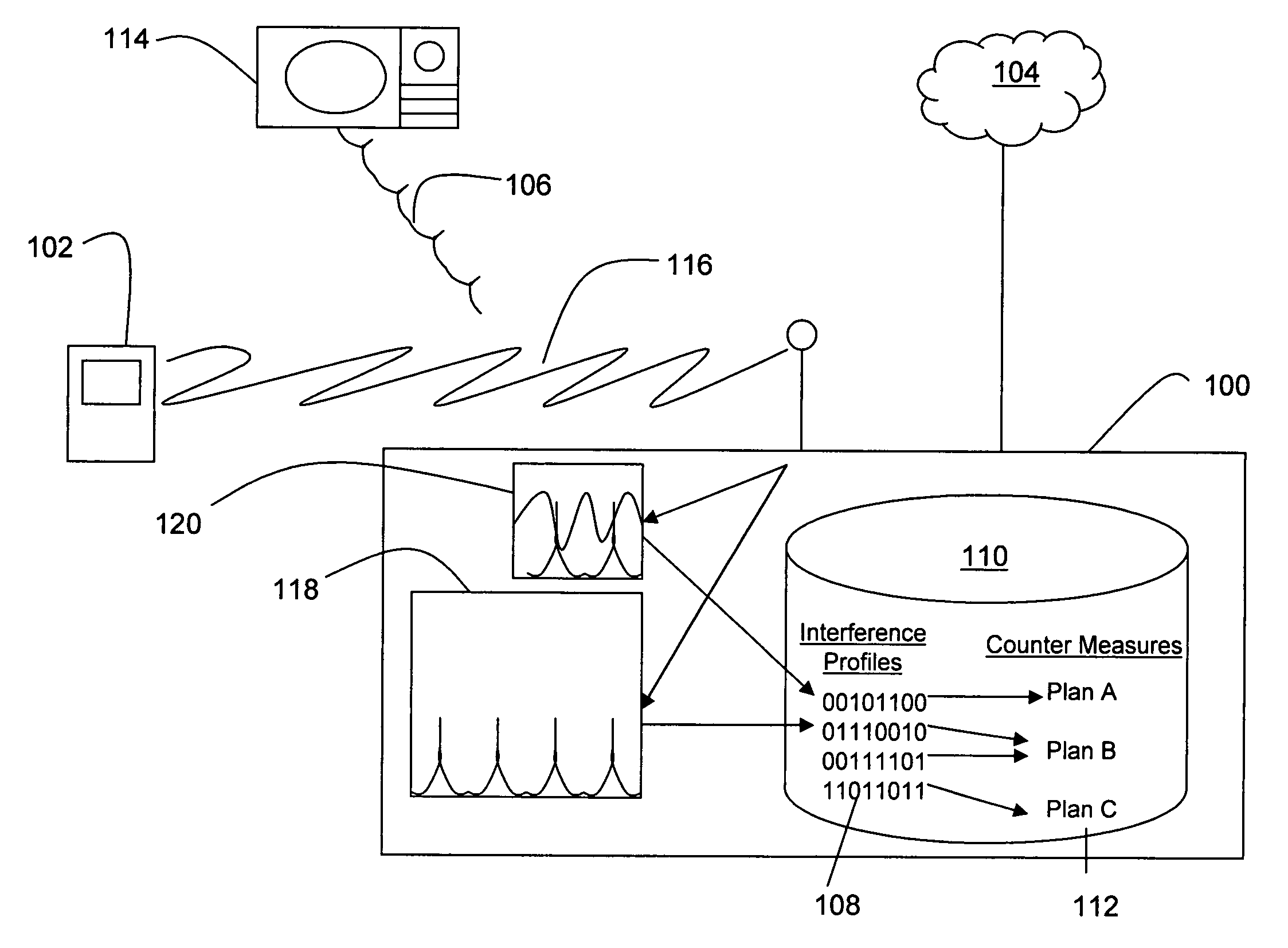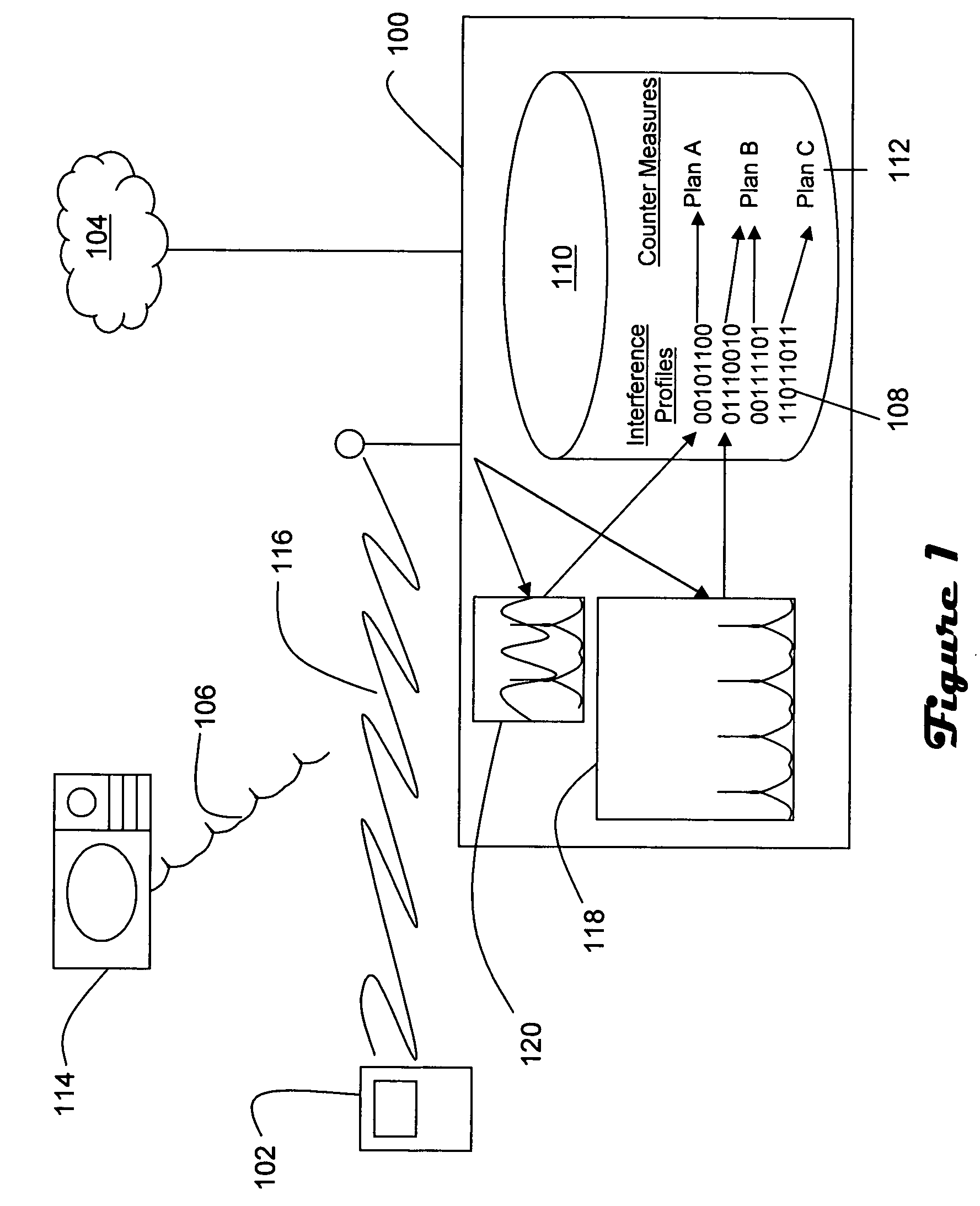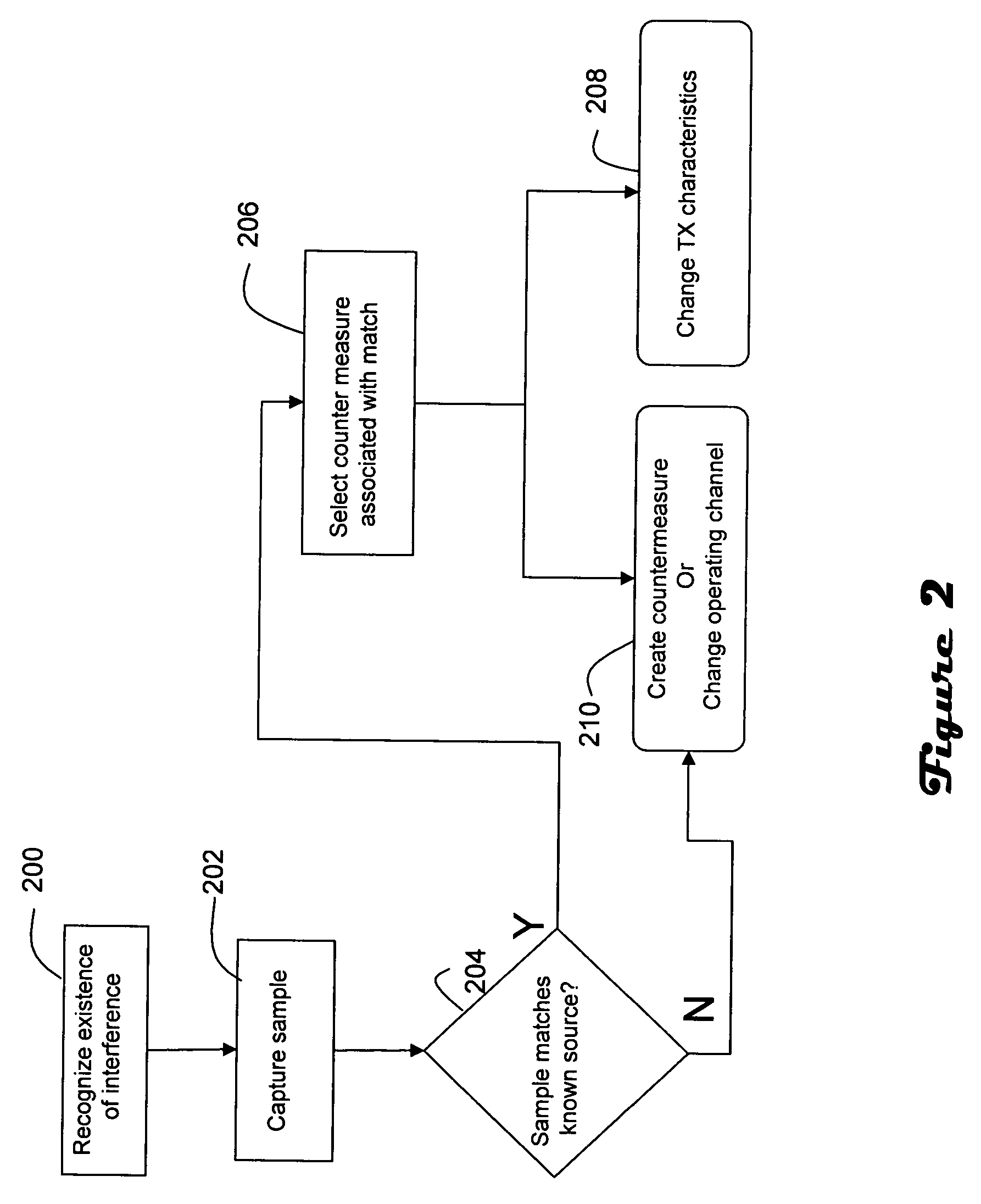Interference source recognition for wireless LANs
a wireless lan and source recognition technology, applied in the field of wireless communication, can solve the problems of less effective parallel demodulation engine in comparison with quiet use, and achieve the effects of improving wlan performance, avoiding relatively long interruptions, and reducing bandwidth
- Summary
- Abstract
- Description
- Claims
- Application Information
AI Technical Summary
Benefits of technology
Problems solved by technology
Method used
Image
Examples
Embodiment Construction
[0012] Referring to FIGS. 1 and 2, a wireless access point (100) is operative to provide network access to a wireless end station (102) such as a personal computer, PDA, notebook computer or phone. The end station (102) is typically a mobile device without wireline connections, whereas the access point (100) is typically a stationary device having a wireline connection with another network device such as switch, router or server in a network (104). Communications between the access point (100) and the end station (102) are typically two-way, and may utilize one or more channels within a predefined spectrum.
[0013] The access point (100) is adapted to recognize and respond to interference (106) generated by a device (114) other than the end station (102). For example, the access point includes a table (108) of interference profiles in memory (110) which are indicative of particular sources of interference. The memory (110) also includes a table (112) of counter measure plans which sp...
PUM
 Login to View More
Login to View More Abstract
Description
Claims
Application Information
 Login to View More
Login to View More - R&D
- Intellectual Property
- Life Sciences
- Materials
- Tech Scout
- Unparalleled Data Quality
- Higher Quality Content
- 60% Fewer Hallucinations
Browse by: Latest US Patents, China's latest patents, Technical Efficacy Thesaurus, Application Domain, Technology Topic, Popular Technical Reports.
© 2025 PatSnap. All rights reserved.Legal|Privacy policy|Modern Slavery Act Transparency Statement|Sitemap|About US| Contact US: help@patsnap.com



